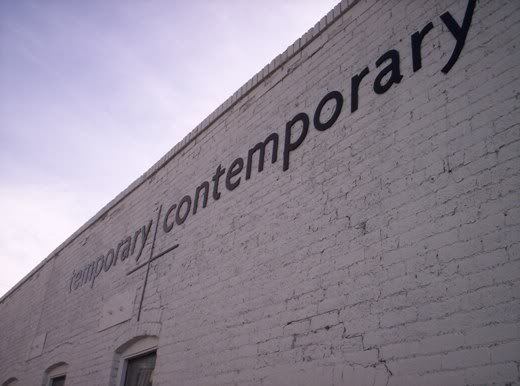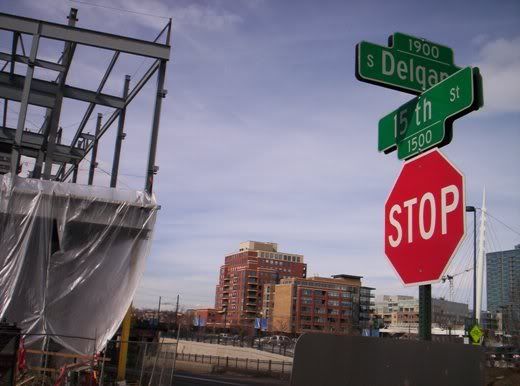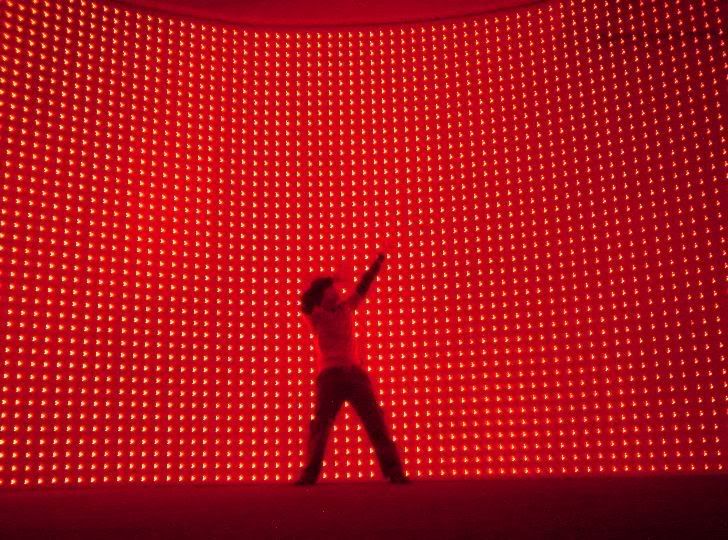Redl's FADE at the MCA in Denver, CO
Go here:
 Which is located here:
Which is located here: To see this:
To see this:
"My work reflects upon the condition of art making after the 'digital experience.' The formal and structural approach to various media I employ, such as installation, CD-ROM, internet and sound, almost requires binary logic, because I assemble the material according to a narrow set of self-imposed rules which often incorporate algorithms, controlled randomness and other methods inspired by computer code.
Since 1997, I have investigated the term 'reverse engineering'* by (re-)translating the abstract aesthetic language of virtual reality and 3-D computer modelling back into an architectural environment by means of large-scale light installations. In this body of work, space is experienced as a second skin, our social skin, which is transformed through my artistic intervention. Due to the very nature of its architectural dimension, participating by simply being 'present' is an integral part of the installations. Visual perception has to work in conjunction with corporeal motion, and the passage of time, an additional parameter of motion.**
The formal aspect of the works is easily accessible. An interpretation and understanding of this aspect is dependent upon the viewer’s subjective references. Equally, the various individual’s interactions within the context of the installation re-shape each viewer’s subjective references and reveal a complex social phenomenon."
Since 1997, I have investigated the term 'reverse engineering'* by (re-)translating the abstract aesthetic language of virtual reality and 3-D computer modelling back into an architectural environment by means of large-scale light installations. In this body of work, space is experienced as a second skin, our social skin, which is transformed through my artistic intervention. Due to the very nature of its architectural dimension, participating by simply being 'present' is an integral part of the installations. Visual perception has to work in conjunction with corporeal motion, and the passage of time, an additional parameter of motion.**
The formal aspect of the works is easily accessible. An interpretation and understanding of this aspect is dependent upon the viewer’s subjective references. Equally, the various individual’s interactions within the context of the installation re-shape each viewer’s subjective references and reveal a complex social phenomenon."
* "Reverse engineering" - the method of re-programming software from an industry rival without knowing the original computer code.
** "Speculatively, we might refer to the well-known experiment involving cats that were restricted so that they could not explore space through their own body movements, and thus could not learn the constants of objects relative to their own movement. Some of the cats were allowed to move freely, but dragged a cart containing other, constrained cats - bound like the viewers of the shadow show in Plato’s cave. Both groups of cats had the same visual experiences. But when all the cats were, after several weeks, allowed to move freely, the cart-pulling cats were able to orient themselves normally, while those cats restricted from any movement would continuously bump into things or fall off edges. From this experiment, it was deduced that an “intelligent” orientation in space, or any generally 'intelligent' behavior, develops from an active senso-motor exploration of the environment."
Florian Rötzer, "Images Within Images, or, From the Image to the Virtual World" in Iterations: The New Image, p.64, International Center of Photography - New York City, The MIT Press - Cambridge, Mass. and London, England 1994.

No comments:
Post a Comment